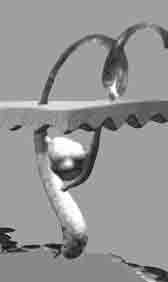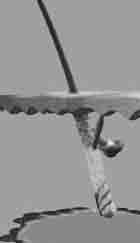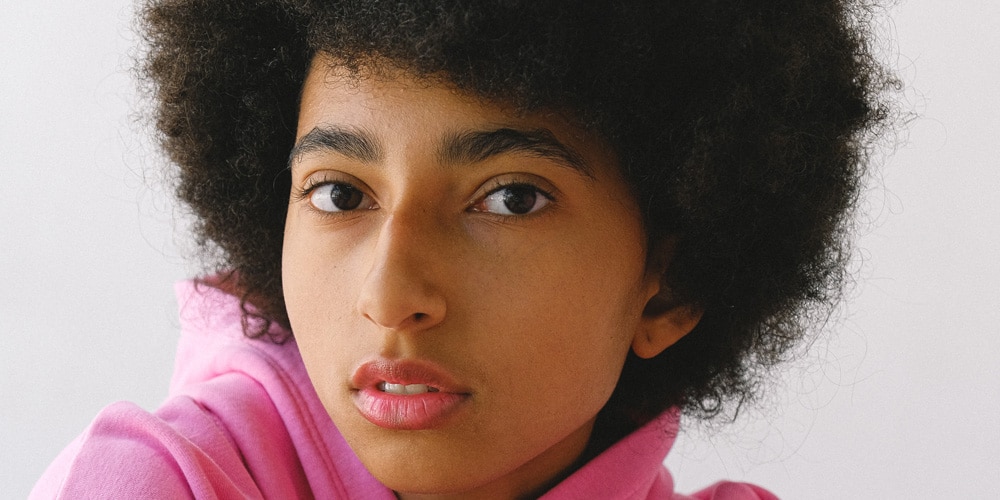Your hair plays an important role at the Centre Clauderer.
Whether it's from African or mixed race, straightened or natural, its characteristics are the focus of specific attention, products and dedicated care. How do I know what type of frizzy hair I have? What are the particularities of frizzy hair? It's essential to understand these concepts before making any specific decisions about hair care for Afro or mixed-race hair.
André Walker's hair classification
André Walker, known for styling the hair of numerous celebrities in the United States, established a reputation in the 1990s for his work in the field of hairdressing. classification of hair according to texture (from the smoothest to the frizziest) that has become established throughout the world. Initially designed for marketing purposes (which product is recommended for which hair type), this definition has now become a reference tool for anyone interested in hair. Here is the classification in question:




| Type | Aspect | Special features |
|---|---|---|
| 1 | Smooth hair | Generally soft, often shiny and resistant, they are difficult to curl. Can grease quickly. |
| 2 | More or less curly hair | Hair with little curl is easy to style. Curlier hair can frizz and will be more difficult to style. |
| 3a | Curly hair, soft curls | Often thick, voluminous hair. Well-defined curls. |
| 3b | Curly hair, tight curls | Thick hair with a mixed tendency (oily roots, dry ends). |
| 3c | Curly, slightly frizzy hair | Hair that generally corresponds to mixed-race hair. |
| 4a | Frizzy or very curly hair with well-formed curls | Curls don't relax naturally. Hair is dry and brittle. |
| 4b | Frizzy hair, slightly frothy appearance | Not very visible curls. Hair is also dry and brittle. |
| 4c | Very frizzy hair | No visible curls. Very fragile, very dry hair. |
More specifically, this classification defines 4 different types of frizzy hair, from grade 3C to grade 4C, depending on the appearance of the hair. At first sight, it is practical and easy to use. However, at Clauderer we've noticed that many of our customers don't really recognise their frizzy hair type within this classification. There are 2 main reasons for this.
- The first reason is that it is a very simplified classification of frizzy hair. So between 2 types of frizzy hair, for example between type 3B and type 3C, there are all the intermediate stages. It's not always easy to know where you stand!
- The second reason is that, depending on the how you style your hair or the products you use to maintain it, the same hair can easily change type. For example, if you use a comb with narrow spikes rather than an 'afro' comb, or use your fingers to style your hair, the natural curls will disappear (or become much less defined). For example, grade 3C frizzy hair can look like grade 4B or 4C frizzy hair. The same applies to the hair care products used, which can tend either to lengthen the natural curls of frizzy hair or, on the contrary, to tighten them.
At Clauderer, we take 3 essential parameters into account to determine the best care routine for the type of frizzy hair we encounter.
- The first is the way it grows, i.e. the angle of the first centimetre of growth in relation to the scalp.
- The second will be the shape of its loop.
- The third and most important of the three remains the how hair reacts to air humidity (water content of the ambient air) or hydration. Will it absorb easily or not?
Frizzy hair, natural protection against humidity and sun damage
Initially, frizzy hair is entirely designed as a bulwark against the sun. It is very dense, often thin and twisted. It is flattened rather than round. It emerges from the dermis lying along the skin of the skull. Its natural curl comes from the fact that its hair follicle (the mould in which it grows under the scalp) is itself S-shaped, not I-shaped like European hair. So everything is organised so as not to leave the slightest patch of scalp exposed to sunburn. The scalp itself is adapted to hot, humid climates: it is by nature drier than a European-type scalp.
Where does the curvature of frizzy hair come from?


This the natural shape of frizzy hair is probably due to a mechanical asymmetry imposed on the hair follicle at the time of embryogenesis, i.e. during the first 4 weeks of fetal development. This asymmetry comes from the matrix, the area at the base of the hair root where its production cells are located. These cells proliferate more on one side than the other, causing the root to swell more on that side (See root on left sketch)
It then acquires an "S"-shaped structure which is then reflected on the stem and generates the loops and the variable flattening of the hair. For "straight" hair (See root on right), the hair-producing cells are distributed symmetrically on either side of the root, no stress changes the shape and the hair grows straight, with an identical roundness throughout the shaft.
Frizzy hair in environments with low levels of sunlight and humidity
Low humidity (as in mainland France, for example) tightens the skin's pores and three cascading reactions in the scalp and the frizzy hair itself:
- The pores are tightened. This disturbs the sebum from its natural path: instead of draining away from the scalp, the sebum stagnates under the skin in the form of sebaceous deposits which coat the roots and may hinder their irrigation.
- On the outside of the scalp, the sebum depletion (already weak by nature) further accentuates the drought and curling of the hair, which makes it more difficult to style and leads to frequent recourse (at least for women) to hairstyling practices such as straightening and/or adding on.
- La scalp dehydration can also cause skin flakes ranging from simple dandruff, to real scalp pathologies. This condition is exacerbated by straightening or adding on, the lack of care adapted to frizzy hair, the infrequency or excessive frequency of shampooing, and the daily use of unsuitable conditioners.
So you see, hydration is the basic treatment for preserving or restoring the beauty of your naturally dry frizzy hair. Without a deep moisturising treatment (nourishing mask based on butter or vegetable oil such as Baume N° 56 or the Baume No. 57), your hair, already dry by nature, will become increasingly dehydrated. Weakened and lacking in nutrition, curly hair tends to break more easily.
With our advice, by following a hair routine that's perfectly adapted to frizzy hair, you can give it the moisture it needs to express its full potential.
How do I treat my Afro hair?
Whatever type of hairstyle you choose, whether you want to preserve and define your curls or repair your relaxed hair the basic advice is to give your hair as much nutrition as possible. Second tip: hair is fragile by nature (each curl can be a breaking point, leading to a source of potential hair breakage. Your frizzy hair deserves to be handled with care and as little as possible.
For the beauty of Afro hair, the moisturising care are the key: without going overboard with certain plant oils, nourishing dehydrated lengths is a daily must. A spray of (spring) water and oil every day, a hair cream or a light oil on the ends to redefine and nourish the curls, and you're ready to go!
Conversely, avoid shampooing too often. Poorly adapted to the specific characteristics of Afro hair, shampoo can become the enemy of your hair! Crème lavante (more nourishing) and space out your washes. The right time to shampoo: about twice a month.
Answers to your questions about the specific characteristics of frizzy hair
How do I know my frizzy hair type?
A simple classification has been established by André Walker, who distinguishes frizzy hair types according to their natural curl, from curly hair (type 3C) through intermediate stages 4A and 4B to very frizzy, even mossy hair (type 4C). However, the same hair can change type depending on the treatments used or how it is brushed.
What is 4C hair?

According to André Walker's classification, type 4C hair is very frizzy, with little or no curl definition. This is the most frizzy hair type. 4C hair is by nature very dry, very fine and therefore very fragile. It is frothy and brittle. A suitable hair routine is therefore essential to moisturise it on a daily basis and nourish it with appropriate deep care products.
What advice do you have for frizzy and curly hair?
Easily dried out, frizzy hair is fragile and needs regular moisturising to prevent it becoming too dry and brittle. Apply a hair mask frequently using a plant-based oil or butter (with a few drops of nourishing and strengthening essential oils). 1 shampoo a fortnight is more than enough.

